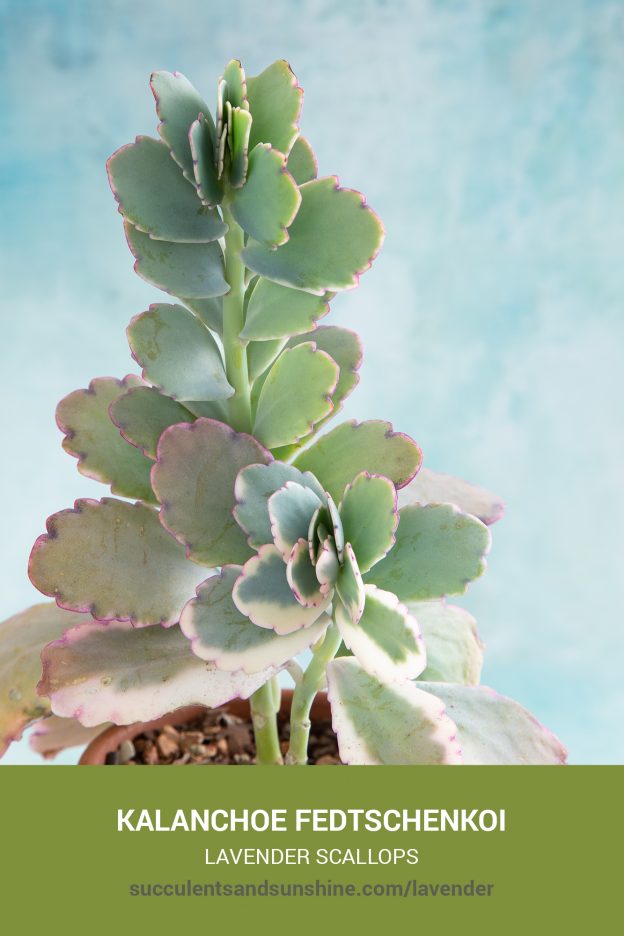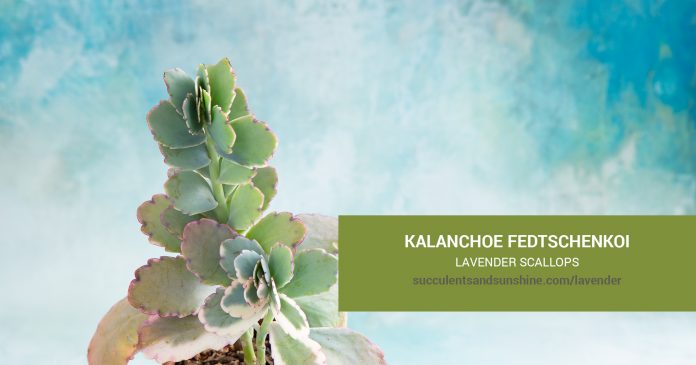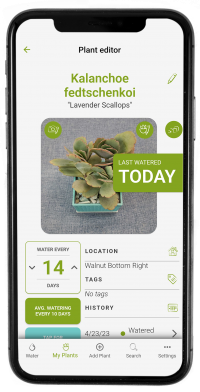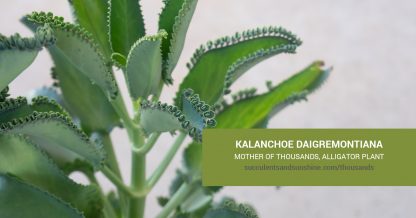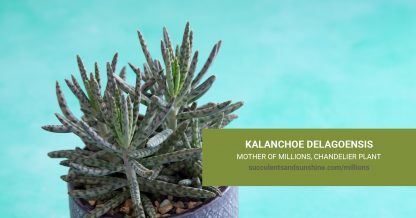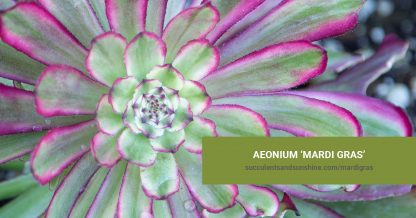Care and Propagation Information
General Care for Kalanchoe fedtschenkoi "Lavender Scallops"
Kalanchoe fedtschenkoi "Lavender Scallops" is a very prolific propagator, making it either a weed or an exciting succulent to grow and share with others. The leaves grow tiny bulbils along its edges. When the plantlets fall to the ground, they grow new plants. Be cautious of where you plant this succulent.
Watering
"Lavender Scallops" has typical watering needs for a succulent. It's best to use the “soak and dry” method, and allow the soil to dry out completely between waterings. Water sparingly in the winter when it is dormant.
And be sure to get our FREE watering cheat sheet so you can learn how to tell if your succulents are getting too much water (and how to save them if needed).
Where to Plant
Kalanchoe fedtschenkoi "Lavender Scallops" is not cold hardy, so if you live in a zone that gets colder than 30° F (-1.1° C), it's best to plant this succulent in a container that can be brought indoors. It does well in full to partial sun.
Also known as
Bryophyllum fedtschenkoi
How to Propagate Kalanchoe fedtschenkoi "Lavender Scallops"
Kalanchoe fedtschenkoi "Lavender Scallops" can be propagated from stem cuttings, leaves, offsets, plantlets, or seeds.
Cuttings
To grow Kalanchoe fedtschenkoi "Lavender Scallops" from cuttings, use a sterile, sharp knife or pair of scissors. Remove a stem from the main plant, and allow it to callous for several days before placing on well-draining soil. Water whenever the soil has dried out completely.
Leaves
To propagate "Lavender Scallops" from leaves, twist a leaf from the mother plant. Be sure that none of the leaf remains on the stem, or you will have a smaller chance of success.
Allow the leaf to dry out for several days so that the end callouses over, and then place on well-draining soil. Water whenever the soil is completely dry.
Plantlets
To remove a plantlet from the mother plant, simply pull gently from the leaf.
There are several things you can do with the babies now. You can allow the plantlet to sit for a day or two to callous over, and then place on well-draining soil.
You can also treat the plantlets like germinated seeds. Place them on well-draining soil, and cover with clear plastic to create a small greenhouse. Grow under the plastic film until they form roots, and are able to be transplanted into a separate planter.
